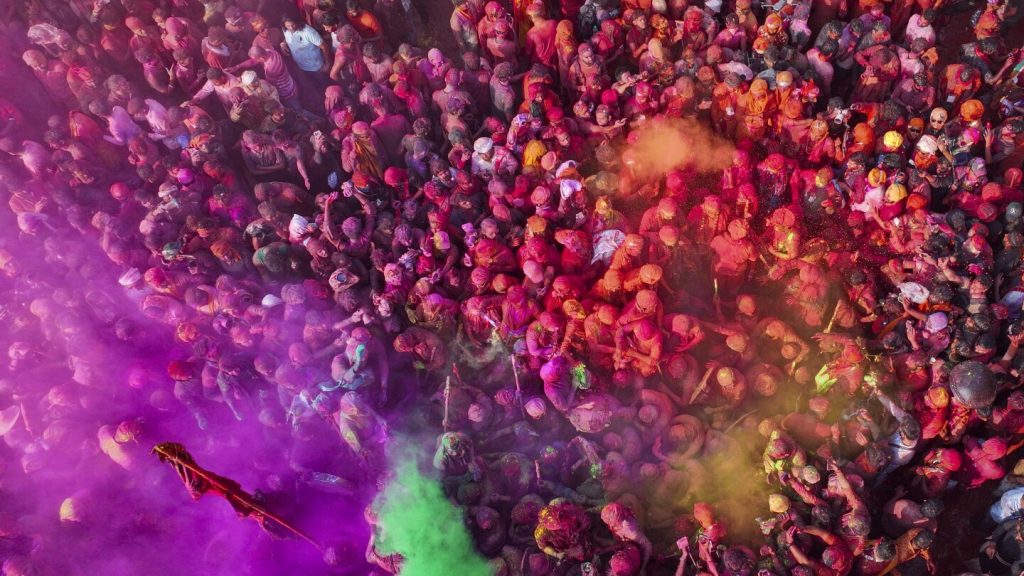Millions of Indians celebrated the Hindu festival of Holi across the country, marking the arrival of the spring season. The festival is known for its vibrant colors and joyful atmosphere, with people exchanging food and drinks, smearing each other with colored powders, and engaging in playful activities. Holi is a celebration of divine love between the Hindu god Krishna and his consort Radha, symbolizing a time of rebirth and rejuvenation, letting go of negativity and embracing positivity.
One of the key aspects of Holi celebrations is the consumption of traditional beverages like Thandai, a milk-based drink with dry fruits that can sometimes contain cannabis. Another tradition is Bhang, a paste made from cannabis leaves used in drinks and snacks, connected to Hinduism and Lord Shiva. In some parts of India, large bonfires are lit the night before the festival to symbolize the triumph of good over evil. While the sale and consumption of Bhang are legal in India, some states have imposed bans on it due to its association with cannabis.
Holi traditions vary across different regions of India. In some northern towns, women participate in a ritual known as “Lathmar Holi,” where they playfully hit men with wooden sticks in response to teasing. This unique tradition attracts a large number of visitors during the festival. Some parts of India also witness large gatherings where people drench each other in colored powders, throw water balloons, and engage in dance and music festivities. The festival of colors is a time for communities to come together and celebrate the spirit of joy and unity.
The colorful celebrations of Holi are accompanied by lively street processions, music, and dancing in cities like Mumbai, Kolkata, and Jammu. Revelers can be seen with their faces smeared with colored powders, dancing and spreading cheer. The festival is not just about fun and games but also carries deep cultural and religious significance for the people of India. Devotees participate in rituals and ceremonies at temples, offering prayers and celebrating the arrival of spring with colored powders and water.
Despite the festive atmosphere, some incidents of unruly behavior were reported during Holi celebrations, including a man being attacked by a swarm of bees. It is essential for participants to practice caution and respect while engaging in the revelries of the festival. Overall, Holi remains a cherished tradition in India, bringing people together to embrace color, joy, and the spirit of renewal. The festival signifies the triumph of good over evil, the arrival of spring, and the unity of communities in celebrating the vibrant culture and traditions of the country.


